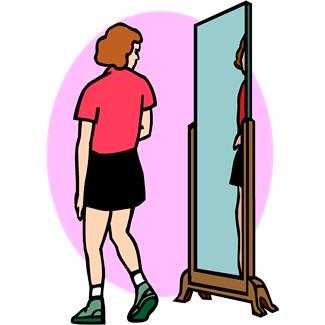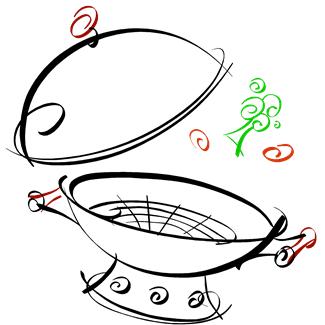Food Cravings: How To Maximize Them For Our Good Health
FOOD CRAVINGS: HOW TO MAXIMIZE THEM FOR OUR GOOD HEALTH (ISSUE 60)
By Diane Gold
 Before we talk about food cravings and how to maximize them for health, I’d like to say that this article is about FAITH, not faith in someone or something else, but faith in ourselves that we may not be able to see yet. It is similar to that faith that many people attribute to a supreme entity; yet, we are going to use faith in ourselves for this lesson.
Before we talk about food cravings and how to maximize them for health, I’d like to say that this article is about FAITH, not faith in someone or something else, but faith in ourselves that we may not be able to see yet. It is similar to that faith that many people attribute to a supreme entity; yet, we are going to use faith in ourselves for this lesson.
I want to mention a video clip I saw this morning. It pictures a just-turned 4-year-old girl pumping herself up by speaking positive statements to herself in the mirror. Many call these daily affirmations, you know, the kind where we tell ourselves we are amazing, happy, talented as we watch our mouth in the mirror as we say the words. This act, many have demonstrated, solidifies our belief in how amazing, happy and talented we actually are.
So, here’s a little girl, Jessica, standing on the bathroom counter, looking into her bathroom mirror, saying, with enthusiasm and self-assuredness,
“I can do anything good. I like my school; I like my dad; I like my cousins; I like my aunt; … I like my mom; I like my sister; I like my haircut… I can do anything good; I can do anything.”
DEFINING CRAVINGS
Let’s define cravings, since we all have them. A craving is a strong desire, which we all have. Synonyms for cravings are appetite, which we all need to self-sustain, and yearning or yen. If we all used our appetite for health, we would all be in good shape. But, when we talk about food cravings, we are generally speaking about following our urges without using self-control.
CHARACTER TRAITS
Like any other habit, we can change the way we act once we get our cue, which, in this case, is the food craving. So, let’s examine what we cravers have in common, for the most part.
Here are the traits that usually accompany a food craving person.
1) Our food craving is a special cue that demands immediate attention on our part.
2) We enjoy pleasurable sensations. We may also be experiencing what used to be pleasurable and just going through the motions.
3) We consider the pleasure from food more important than our own health, so we are strong- willed in that we do what we decide.
 4) We are risk takers, and, like the casino gambler, we bet that eating healthier foods and amounts tomorrow is reason enough for us to gamble with our health and maintain our same habits now.
4) We are risk takers, and, like the casino gambler, we bet that eating healthier foods and amounts tomorrow is reason enough for us to gamble with our health and maintain our same habits now.
5) We believe that eating what we currently believe to be the best pleasurable food at the moment is not such a big thing.
What we don’t count on is that, if we do this for day after day, month after month, we will seriously impair our health. But, we were willing to create a habit in the first place, so we have the ability to create another 1 or change the original one.
These traits shows we are seekers of good times, able to live for the present. They also lead to adventure and following our hearts. All of these traits are usually present in people who have not adjusted their urges to parallel how they want to look and feel. They are strong qualities that can be easily used to maximize what we do with our urges for health.
WHAT RESULTS FROM OUR CURRENT ROUTINE
When we have food cravings, and we are in the habit of acting only 1 way to them, we end up causing 1 or more of the following things to happen: we gain weight; we don’t like the fact that we gained weight; we don’t like how we look; we are replacing our sad/angry/lonely/frustrated with food; we get sick as a result of not eating well resolution.
Understanding why we act on our cravings in a way that ends up unhealthy for us is not necessary in order to add a new act to our repertoire of what routine we go through when we get the food craving cue. The important thing is what we do with the cue.
 Think of a band member who is playing the wrong note because she has gotten used to playing that particular note and even enjoys how it sounds. When her band leader corrects her, she will have to change her habit to balance the group. In order to keep her job and continue playing the music that she loves, she will make the change.
Think of a band member who is playing the wrong note because she has gotten used to playing that particular note and even enjoys how it sounds. When her band leader corrects her, she will have to change her habit to balance the group. In order to keep her job and continue playing the music that she loves, she will make the change.
It’s a little different with food, although not very. The biggest difference is that we are both the band leader and the player.
So, let’s say we have just experienced 1 of the results from our eating current routine, listed above. Let’s say we have gained weight and don’t like it. The easiest way (and 1 of the only ways) to change a habit is to tweak the routine. We have to keep at the front of our mind our weight loss goal.
ACTION STEPS
It’s time to use the character traits listed above to change our habit of bolting to eat when a craving arrives.
We have established that most of us, in some ways, are attentive to cues, pleasure lovers, strong-willed, risk takers and willing to create habits. All we have to do is immediately react to our urge cue with a new action. Much in the same way we must combat our fear when being attacked, we must automatically, whether we want to or not, get up and do something new upon feeling our craving. We have the will, and we’ve automatically done something before which is what created the habit to begin with.
1) We need to act with NO THOUGHT. Our mind will trip us into thinking. When we are thinking, we are not doing. We must be doing.
 2) What we will do for our craving is go to our refrigerator and get a cup of already made steamed vegetables that we cooked at the beginning of the week to have available for snacks.
2) What we will do for our craving is go to our refrigerator and get a cup of already made steamed vegetables that we cooked at the beginning of the week to have available for snacks.
3) We can add a few drops of sesame oil and a little liquid amino acid soy-sauce alternative, for flavor. If the blandness of steamed veggies is screaming out, stir-fried veggies cooked in a drop of olive oil work, too.
4) Eating with chop sticks and chewing at least 20 times per bite, preferably 45, slows the eating process.
5) Always take a container of these veggies to work or school for 2 planned snacks, am and pm. The veggies can also be used to curb a craving at any time during the day. If we find that we need 3 cups, 2 for snacks and 1 for a craving, we will have them available.
CONCLUSION
Be confident that change is possible as long as there is a start-to-finish method in place. Even if this is the first time we ever exhibited self-control, we have a specific method with a specific action step: a systematic approach. Therefore, we all will be able to take charge and maximize our health.
Maybe we won’t succeed on day one, but day two brings another opportunity. An attempt must be made each time we have a craving so that we can get our current routine to match our current goals. What’s the worst that will happen? We will eat healthy veggies for snack. In having these veggies nearby, we will create a new habit. Our success might start off slowly, but our results will be positive, with the patience we will establish.
We will find new, exciting flavors in our veggies, too. That is something to look forward to.
Make sure not to warm our veggies, even if we think there is time. This is food kung fu. Get used to cold veggies since there is no time to spare between the food craving, our cue, and our satisfaction of that craving with a healthy action.
 Microwave ovens rob nutrients from our food, and stoves take longer than our craving will wait. Eventually, when we have changed our habit from “cue to instant eating” to “cue to patience to eating healthily,” warming our veggies may be an option.
Microwave ovens rob nutrients from our food, and stoves take longer than our craving will wait. Eventually, when we have changed our habit from “cue to instant eating” to “cue to patience to eating healthily,” warming our veggies may be an option.
And, finally, rejoice, this is a food adventure and the next chapter in our self-mastery.
FEEDBACK
Please leave a comment and LIKE.
DIANE GOLD, AUTHOR
Diane Gold, Founder of Warriors of Weight, Moms For Healthy Daughters, is a mentor in tai chi, kung fu and meditation, a music, fitness and stress expert and a dedicated mom.
She believes we can change a habit but changing our routine, as long as there is a system in place in which to do it. She says,
“We always create habits, so we are practiced at this aspect of behavior. We are also not new at changing the ways that we act. We do it all the time, based on how we feel, how we must act in social settings and how we consider others who might be affected by our actions. So, we are experienced.
“All we need do is prepare what we are going to do, smile or frown and do it. The next time, it will be easier, and the next time, even easier. Pretty soon, we will be accomplished and moderately comfortable at the new action step, so much so that it will become our new habit.
“To succeed, we must have faith in ourselves and begin!”







